Related Research Articles
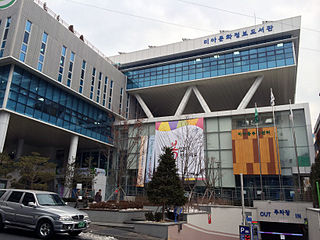
Mia-dong is a dong, neighbourhood of Gangbuk-gu in Seoul, South Korea. From June 30, 2008, nine administrative Mia-dongs were divided Mia-dong, Samgaksan-dong, Samyang-dong, Songcheon-dong and Songjung-dong. Remained Mia-dong is former Mia 3-dong.

Gangbuk District is one of the 25 gu which make up the city of Seoul, South Korea. Its name is derived from it being located at the north of Han river. It was created from neighbouring Dobong District in 1995. The current mayor is Park Gyeom-su.
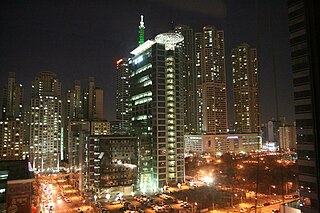
The Yangcheon District (Yangcheon-gu) is a gu, or district, of Seoul, South Korea, located on the southwest side of the Han River. At the centre of this district is the Mok-dong area, which is home to numerous shopping outlets, bars and restaurants, an ice rink, and large residential buildings inhabited by mostly upper-middle and upper-class families.
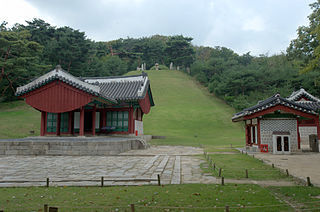
Seongbuk District is one of the 25 districts of Seoul, South Korea. The district is located in the mid-north part of the city. The current mayor is Kim Young-bae (김영배), who has been mayor since July 1, 2010. Seongbuk-gu was established under Presidential Decree No. 159 on August 13, 1949, and was promoted to a autonomous district by implementing a Gu-level local government on May 1, 1988.
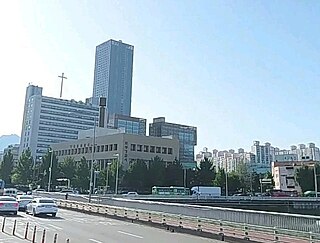
Dobong District is one of the 25 districts of Seoul, South Korea. As of 2020, Dobong has a population of 315,979 and an area of 20.71 square kilometres (8.00 sq mi), and is divided into four administrative neighborhoods. The district is located in northeastern Seoul, bordering the Gyeonggi Province cities of Yangju and Uijeongbu to the north, and the districts of Gangbuk to the southwest and Nowon to the east.

Samcheong-dong is a dong, neighbourhood of Jongno-gu in Seoul, South Korea. It lies north of Jongno and east of Gyeongbokgung. This hilly neighborhood is characterized by numerous small art galleries, shops, and restaurants. Visitors to the area can see restored hanok, Korean traditional-style houses. The Board of Audit and Inspection of Korea is located here. It is also home to several foreign government offices including the Vietnamese consulate.
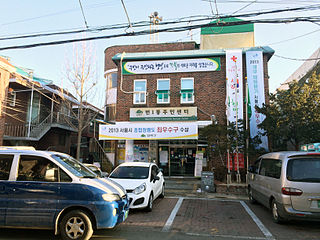
Beon-dong is a dong (neighborhood) of Gangbuk District, Seoul, South Korea.

Suyu-dong (Korean: 수유동) is a dong, neighbourhood of Gangbuk-gu in Seoul, South Korea. From June 30 of 2008, six administrative Suyu-dongs were divided to Insu-dong, Ui-dong, and Suyu-dong.
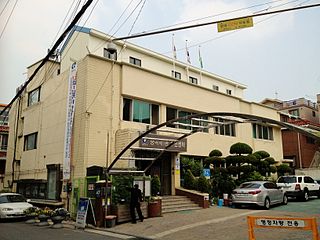
Junggok-dong is a dong, neighbourhood of Gwangjin-gu in Seoul, South Korea.
Tongin-dong is a dong, neighbourhood of Jongno-gu in Seoul, South Korea. It is a legal dong administered under its administrative dong, Hyoja-dong.
Taepyeongno is a major thoroughfare in the central districts of Seoul, South Korea and the second longest road next to Sejongno in the Gangbuk area. With a 1.1 km length and a 50 m width, Taepyeongno originates at 139 Sejongno in Jongno-gu and terminates at Namdaemun in Jung-gu. It runs southwards through Sogong-dong, Jeong-dong, Taepyeongno 1, 2 ga-dong, Bukchang-dong and Mugyo-dong. Numerous landmarks along here include Koreana Hotel.
Jugyo-dong is a legal dong, or neighbourhood of the Jung-gu district in Seoul, South Korea. It is governed by its administrative dong, Euljiro 3, 4, 5ga-dong.
Sangsu-dong is a legal dong, neighbourhood of the Mapo-gu district in Seoul, South Korea and was merged with Changjeon-dong into Seogang-dong in January 2007.
Nagwon-dong is a dong, neighbourhood of Jongno-gu in Seoul, South Korea. Nagwon means "paradise" in Korean. It is a legal dong administered under its administrative dong, Jongno 1, 2, 3, 4 ga-dong.
Songjung-dong is a dong, neighbourhood of Gangbuk-gu in Seoul, South Korea. From June 30 of 2008, Former Mia-4 and 9 dongs are combined for this dong.
Songcheon-dong is a dong, neighbourhood of Gangbuk-gu in Seoul, South Korea. From June 30 of 2008, Former Mia-5 and 8 dongs are combined for this dong.
Samgaksan-dong is a dong, neighbourhood of Gangbuk-gu in Seoul, South Korea. From June 30 of 2008, Former Mia-6 and 7 dongs are combined for this dong.
Samyang-dong is a dong, neighbourhood of Gangbuk-gu in Seoul, South Korea. From June 30 of 2008, Former Mia-1 and 2 dongs are combined for this dong.
Insu-dong (Korean: 인수동) is a dong, neighbourhood of Gangbuk-gu in Seoul, South Korea. From 30 June 2008, the former Suyu-5 and 6 dong were combined to form this dong.

Bukhansan Ui Station is a station on the Ui LRT located in Ui-dong, Gangbuk District, Seoul. It opened on the 2 September 2017. The tracks continue through the station to the Train Depot. The station is located next to the Ui LRT Control centre.
References
- 1 2 "우이동 (Ui-dong 牛耳洞)" (in Korean). Doosan Encyclopedia . Retrieved 2008-04-18.
